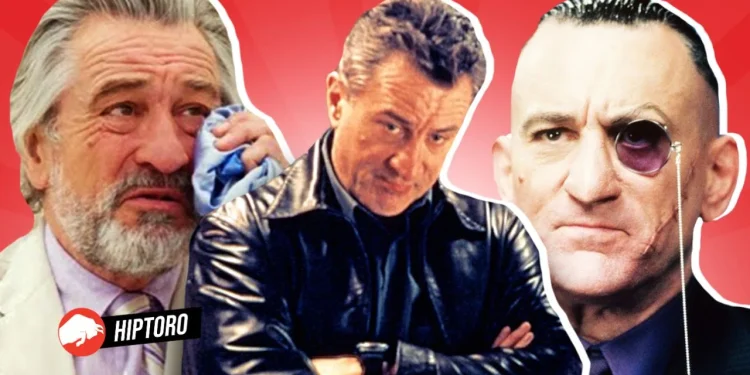Robert De Niro, a titan of American cinema, has captivated audiences worldwide with his unparalleled acting prowess and versatility. Born on August 17, 1943, in New York City, De Niro’s career spans over five decades, during which he has portrayed some of the most iconic characters in film history. Known for his intense method acting and ability to fully embody the characters he portrays, De Niro has worked with a litany of the film industry’s most esteemed directors, including Martin Scorsese, Francis Ford Coppola, and Michael Mann.
De Niro’s filmography is a testament to his versatility, ranging from crime thrillers and dramas to comedies and psychological films. His roles have earned him numerous accolades, including two Academy Awards. Beyond his achievements in front of the camera, De Niro is a respected producer and director, contributing significantly to the film industry beyond his acting roles.
1. The Godfather Part II (1974)
“The Godfather Part II” (1974), directed by Francis Ford Coppola, stands as a monumental achievement in cinema, not only as a sequel but as a narrative that enriches the saga of the Corleone family. Robert De Niro‘s portrayal of a young Vito Corleone in the early 20th century offers an intricate exploration of character development, thematic depth, and significant cultural impact, further solidifying the film’s legacy and De Niro’s place within it.
Plot and Character Development
The narrative arc of Vito Corleone is a masterclass in storytelling and character progression. Beginning as Vito Andolini, a child who escapes the clutches of a Sicilian Mafia boss to emigrate to America, De Niro’s Vito transforms from an impoverished immigrant in the slums of New York to the revered patriarch of the Corleone mafia family. This transition is portrayed with meticulous detail, capturing the essence of the American immigrant experience entwined with the dark underbelly of the American Dream.
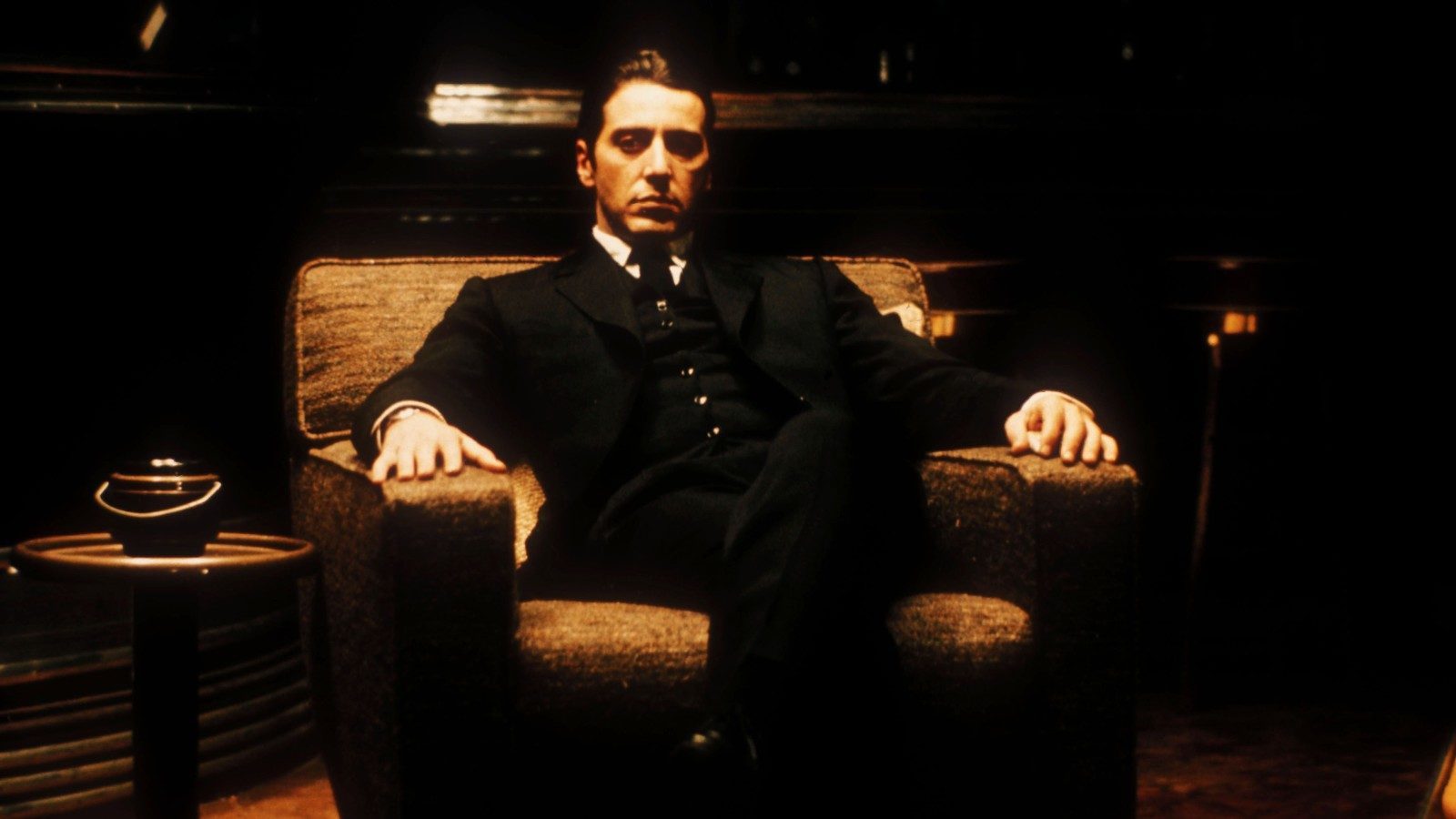
De Niro’s performance is pivotal to this transformation. With minimal dialogue, especially in his early scenes, De Niro relies on body language, facial expressions, and the silent intensity of his gaze to convey Vito’s intelligence, determination, and burgeoning leadership qualities. His interaction with other characters, from the tender moments with his family to the calculated dealings with friends and foes alike, illustrates the complexity of his character’s evolution. This nuanced portrayal of Vito Corleone’s rise to power showcases De Niro’s exceptional ability to embody a character whose quiet intensity and moral ambiguity redefine the archetype of the mob boss.
Thematic Elements and Performance
The thematic richness of “The Godfather Part II” lies in its exploration of power dynamics, loyalty, betrayal, and the pursuit of the American Dream. Vito’s journey from an immigrant struggling to survive to a powerful mafia don is depicted against the backdrop of a corrupt and opportunistic society. De Niro’s portrayal brings to the forefront the dual nature of Vito’s character: a ruthless mob boss who is also a caring family man, challenging the audience’s moral compass and eliciting empathy for a character who operates outside the law.
The film delves into the concept of loyalty and betrayal, not just in the criminal underworld but also within the confines of family and friendship. De Niro’s interactions with other characters—whether as a young man forging alliances or a powerful don seeking vengeance—highlight the importance of loyalty and the consequences of betrayal. These themes are mirrored in the parallel storyline of Michael Corleone, played by Al Pacino, creating a generational saga that examines the cyclical nature of power and corruption.
Cultural Impact and Critical Reception
“The Godfather Part II” has left an indelible mark on cinema and culture. Upon its release, the film was acclaimed for its ambitious storytelling, depth of character, and cinematic excellence. De Niro’s performance was lauded as a revelation, earning him an Academy Award for Best Supporting Actor. This recognition affirmed his status as a formidable talent and solidified Vito Corleone’s legacy as one of cinema’s most iconic characters.
The film’s portrayal of the immigrant experience and the corrupting influence of power resonated with audiences worldwide, offering a poignant commentary on the American Dream. Its impact extends beyond cinema, influencing popular culture, language, and the gangster genre. The phrase “Keep your friends close, but your enemies closer,” among others, has permeated popular discourse, exemplifying the film’s cultural significance

Furthermore, “The Godfather Part II” is often cited in discussions about the greatest films ever made, not only for its narrative and thematic depth but also for its innovation in nonlinear storytelling. Its critical acclaim and enduring popularity underscore the film’s significance in exploring complex characters and themes that challenge and captivate audiences.
2. Taxi Driver (1976)
“Taxi Driver,” directed by Martin Scorsese and released in 1976, stands as a seminal work in the history of American cinema. Robert De Niro’s portrayal of Travis Bickle, a mentally unstable Vietnam War veteran turned New York City taxi driver, provides a riveting exploration of isolation, violence, and the quest for redemption. This character study, set against the backdrop of a decaying New York, delves deep into the psyche of its protagonist, offering a stark, unsettling glimpse into the complexities of urban loneliness and the consequences of societal neglect.
Plot and Character Development
Travis Bickle is a character defined by contradictions. On the surface, he is a man seeking to cleanse the city of its perceived filth, yet he is simultaneously drawn to the very darkness he despises. De Niro’s portrayal captures this inner turmoil with haunting precision, embodying Bickle’s descent into madness through a nuanced performance that is both empathetic and disturbing.
The transformation of Bickle from a disenchanted taxi driver to a self-appointed avenger is marked by his increasing detachment from reality and the escalation of his violent tendencies. This journey into the heart of darkness is punctuated by De Niro’s immersive performance, which lays bare the soul of a man on the brink.
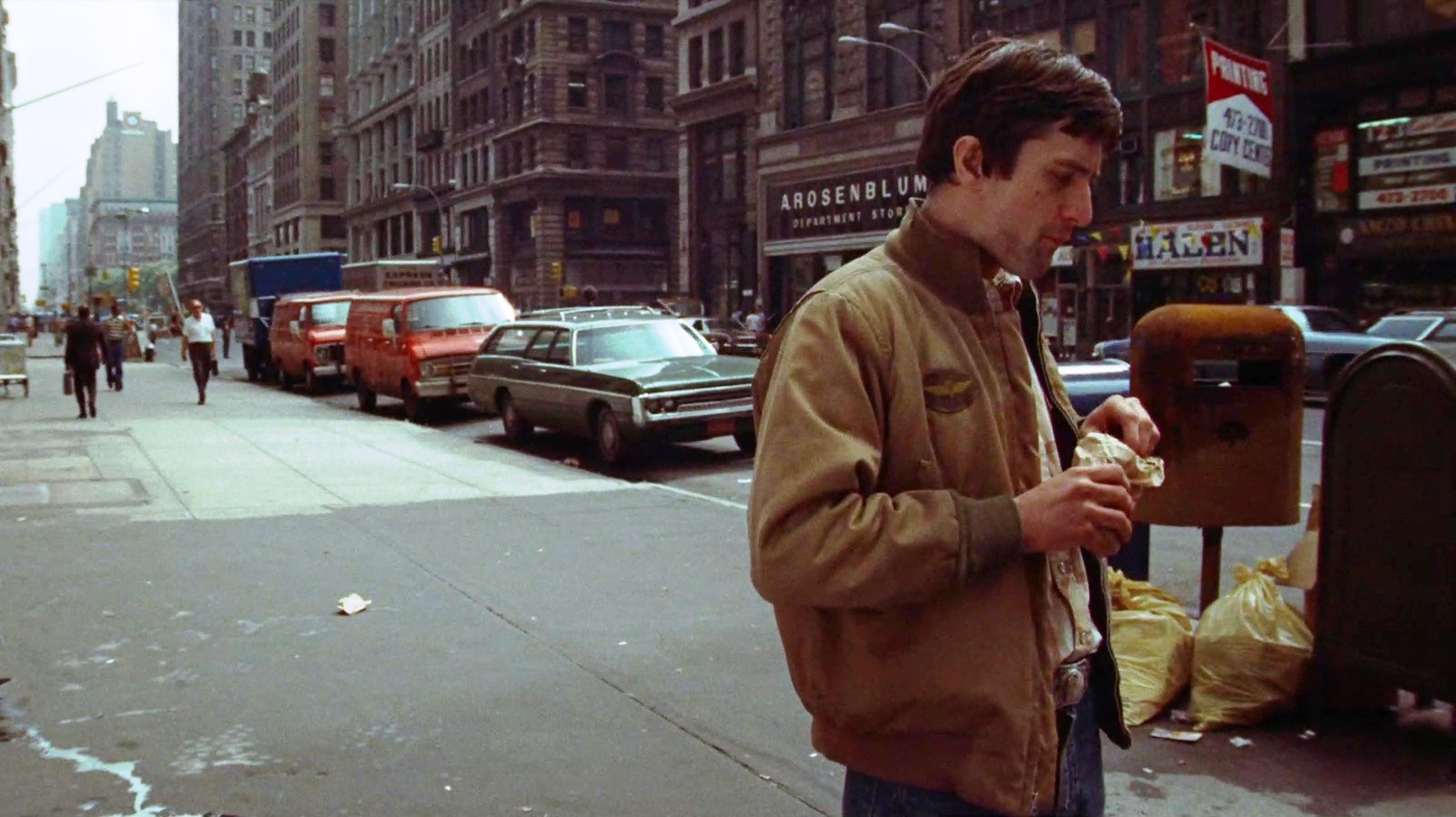
Thematic Elements and Performance
“Taxi Driver” confronts the viewer with themes of loneliness, existential despair, and the violent undercurrents of post-war American society. Bickle’s struggle with his own demons and his perception of New York as a cesspool of vice and corruption serves as a reflection of the larger societal malaise. De Niro’s performance is a masterclass in internalization, conveying volumes with minimal dialogue. His interactions with other characters — from the teenage prostitute, Iris (played by Jodie Foster), to his infatuation with campaign worker Betsy (played by Cybill Shepherd) — highlight his inability to connect with others, underscoring the profound isolation that fuels his rage.
The film’s gritty realism and psychological depth are enhanced by De Niro’s dedication to the role. His now-iconic “You talkin’ to me?” monologue, improvised during a scene where Bickle confronts his reflection with a gun, epitomizes the character’s fractured psyche and has become a defining moment in film history.
Cultural Impact and Critical Reception
Upon its release, “Taxi Driver” was met with both controversy and critical acclaim, cementing its status as a cultural landmark. The film’s unflinching portrayal of urban decay and the psyche of a troubled loner struck a chord with audiences and critics alike, sparking discussions about violence, mental health, and the alienation of modern life. Its influence can be seen in a multitude of films that explore similar themes of isolation and societal disintegration.
De Niro’s performance, in particular, received widespread praise, establishing him as one of the most talented actors of his generation. His embodiment of Travis Bickle has been analyzed and celebrated in film studies, contributing to the movie’s enduring legacy. “Taxi Driver” has also left a lasting impact on popular culture, with the “You talkin’ to me?” line becoming a part of the cultural lexicon, symbolizing the film’s exploration of identity and alienation.

Furthermore, “Taxi Driver” has inspired numerous filmmakers and has been referenced in various media, showcasing its significance beyond the realm of cinema. Its exploration of the darker aspects of human nature and the urban experience remains relevant, offering a window into the challenges of navigating a world that feels both profoundly connected and hopelessly fragmented.
3. Raging Bull (1980)
“Raging Bull,” directed by Martin Scorsese and released in 1980, remains one of the most potent and compelling films in the landscape of American cinema. At its core is Robert De Niro’s transformative portrayal of Jake LaMotta, a middleweight boxer whose personal demons and self-destructive behavior led to his downfall both inside and outside the ring. This film not only showcases De Niro’s unparalleled dedication to his craft but also serves as a profound exploration of the themes of obsession, redemption, and the human capacity for self-sabotage.
Plot and Character Development
“Raging Bull” chronicles the life of Jake LaMotta, focusing on his rise and fall in the boxing world and his tumultuous relationships with his wife, Vickie, and his brother and manager, Joey. De Niro’s commitment to authenticity in portraying LaMotta is evident in his remarkable physical transformation, gaining a significant amount of weight to depict LaMotta’s post-boxing deterioration. This physical metamorphosis is matched by De Niro’s deep emotional immersion into the character, capturing LaMotta’s volatile nature, deep-seated insecurities, and destructive anger with haunting precision.
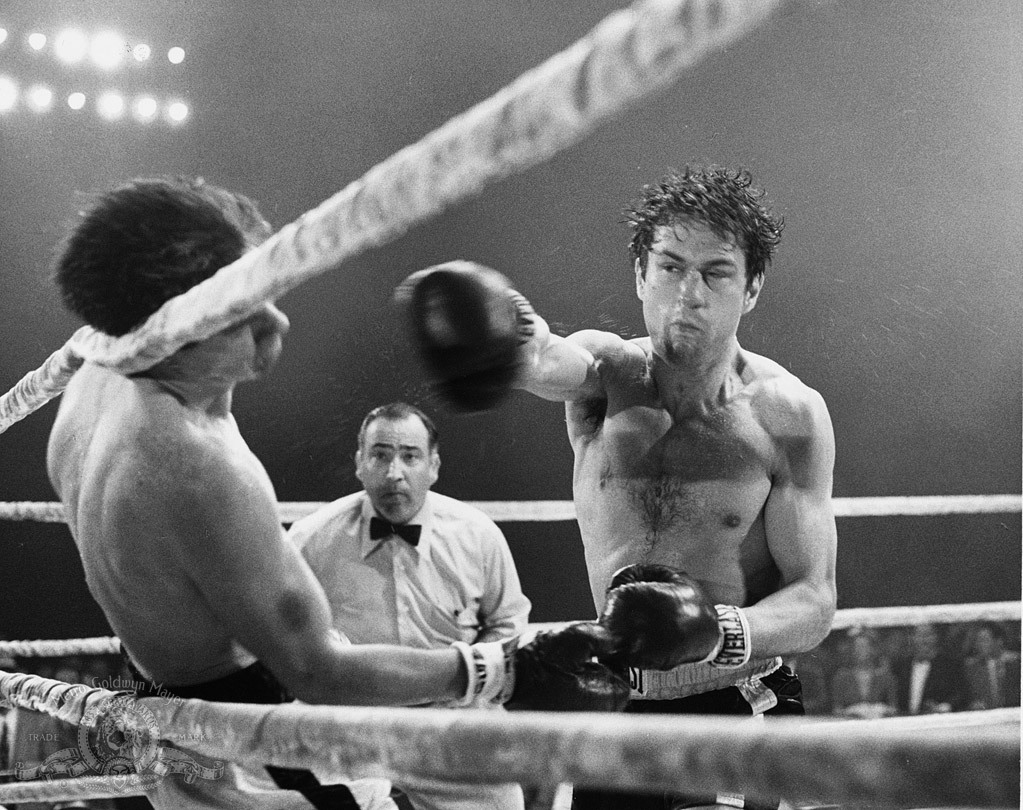
The narrative structure of “Raging Bull” allows for a detailed exploration of LaMotta’s character, delving into his psyche and uncovering the root of his rage and jealousy. De Niro’s performance brilliantly conveys the complexity of LaMotta’s emotions, from moments of vulnerability and regret to explosive outbursts of violence. This nuanced portrayal enables the audience to empathize with LaMotta despite his many flaws, offering insight into the pain and fear that drive his self-destructive actions.
Thematic Elements and Performance
“Raging Bull” examines the destructive power of pride and the consequences of unchecked aggression, both in the context of the boxing ring and in personal relationships. The film portrays the paradox of LaMotta’s life: his strength and ferocity make him a champion in the ring but lead to his downfall outside of it. De Niro’s performance captures the essence of this paradox, presenting LaMotta as a man at war with himself, unable to escape the cycle of violence and anger that defines his existence.
The themes of obsession and redemption are central to the narrative, with LaMotta’s relentless pursuit of boxing glory juxtaposed against his desire for personal salvation. De Niro’s portrayal of LaMotta’s quest for redemption, despite his many transgressions, highlights the complexity of the human desire for forgiveness and the possibility of change. This exploration of redemption is what elevates “Raging Bull” beyond a simple biographical drama, making it a powerful study of the human condition.
Cultural Impact and Critical Reception
Upon its release, “Raging Bull” was met with critical acclaim, with many praising De Niro’s performance as one of the greatest in film history. The film’s stark black-and-white cinematography, brutal depiction of boxing, and unflinching examination of LaMotta’s life challenged conventional storytelling and aesthetic norms, contributing to its status as a cinematic masterpiece. De Niro’s portrayal of LaMotta earned him his second Academy Award, cementing his reputation as one of the most talented actors of his generation.

The cultural impact of “Raging Bull” extends beyond its accolades, influencing countless films and filmmakers in its portrayal of flawed protagonists and its exploration of themes of redemption and self-destruction. The film’s legacy is reflected in its enduring relevance, with its themes and character studies resonating with audiences and critics alike decades after its release.
4. Goodfellas (1990)
“Goodfellas,” directed by Martin Scorsese and released in 1990, is widely celebrated as a magnum opus in the gangster film genre. Adapted from the non-fiction book “Wiseguy” by Nicholas Pileggi, the film narrates the real-life saga of Henry Hill, a mob associate, and his journey through the ranks of the Italian-American crime syndicate. Robert De Niro’s portrayal of Jimmy Conway, a pivotal figure in Hill’s life, stands out for its complexity and nuance, contributing significantly to the film’s exploration of mob dynamics, loyalty, and betrayal.
Plot and Character Development
In “Goodfellas,” De Niro’s Jimmy Conway is a seasoned mobster known for his charm, strategic acumen, and ruthlessness. Conway’s role as a mentor to Henry Hill (played by Ray Liotta) and his eventual betrayal encapsulates the precarious nature of trust and loyalty within the mob. De Niro skillfully brings to life Conway’s multifaceted personality, portraying a character who is at once likable and menacing. His performance delineates the character’s evolution from a guiding force in Hill’s life to an embodiment of the betrayal and violence that underpins the criminal underworld.
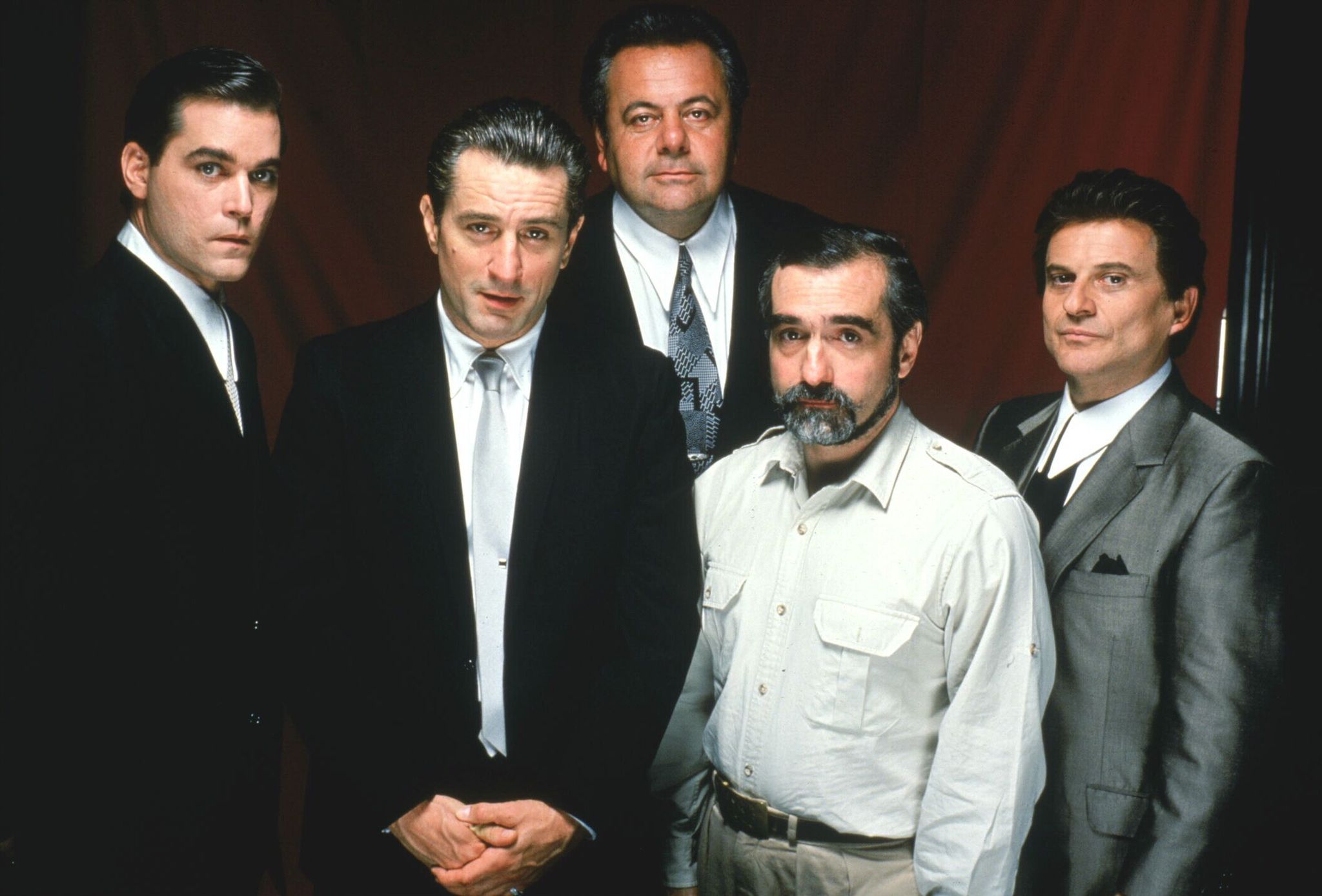
The film’s narrative is a meticulous chronicle of Hill’s rise and fall, punctuated by Conway’s influence and actions that lead to pivotal moments in the story. De Niro’s nuanced portrayal allows audiences to glimpse the internal workings of the mob through the lens of personal relationships, ambitions, and the inevitable consequences of a life of crime.
Thematic Elements and Performance
“Goodfellas” delves deep into themes of loyalty, power, and the seductive allure of the criminal underworld. The film portrays mob life as one of extravagant luxury juxtaposed with constant paranoia, violence, and betrayal. De Niro’s Jimmy Conway emerges as a central figure in this exploration, embodying the dichotomy of mob loyalty and self-preservation. His portrayal highlights the transient nature of power within the mob hierarchy and the ultimate cost of allegiance to the mafia ethos.
Through Conway’s character, “Goodfellas” examines the intricacies of mob psychology—where friendship and business intersect with deadly consequences. De Niro’s performance is pivotal in illustrating how personal and professional loyalties are navigated in a world governed by unwritten rules and the ever-present threat of retribution. His portrayal adds depth to the narrative, offering insights into the complexities of a life dedicated to organized crime.
Cultural Impact and Critical Reception
Upon its release, “Goodfellas” was hailed as a masterpiece of the gangster genre, with critics and audiences alike praising its gritty realism, dynamic storytelling, and exceptional performances, especially De Niro’s portrayal of Jimmy Conway. The film’s impact on popular culture and cinema has been profound, setting a new standard for storytelling within the genre and influencing a generation of filmmakers and storytellers.
“Goodfellas” has been recognized for its innovative use of voice-over narration, freeze frames, and a non-linear narrative structure that provides a visceral experience of mob life. Its cultural significance is underscored by its induction into the National Film Registry by the Library of Congress for being “culturally, historically, or aesthetically significant.”

The film’s legacy is further cemented by its critical reception, with numerous accolades and nominations highlighting its contribution to film history. “Goodfellas” not only solidified Scorsese’s reputation as a master filmmaker but also showcased De Niro’s incredible range and depth as an actor.
5. The Deer Hunter (1978)
“The Deer Hunter,” directed by Michael Cimino and released in 1978, is a profound and harrowing examination of the impacts of the Vietnam War on the lives of American working-class steelworkers. This film, anchored by Robert De Niro’s riveting performance as Michael Vronsky, delves into the psyche of soldiers scarred by war and their tumultuous return to a life forever altered. Renowned for its emotional depth, “The Deer Hunter” addresses themes of friendship, loss, and the sheer brutality of conflict, leaving a lasting impression on its audience and the cinematic world.
Plot and Character Development
De Niro’s character, Michael Vronsky, is at the heart of “The Deer Hunter,” a film that navigates the before, during, and after of the Vietnam War for a group of friends from a small Pennsylvania town. Vronsky is a figure of strength and resilience, traits that are severely tested by his war experiences, most notably depicted in the film’s infamous Russian roulette scenes. These scenes, beyond their immediate tension, serve as a metaphor for the randomness and absurdity of death in warfare, a theme that permeates the narrative.
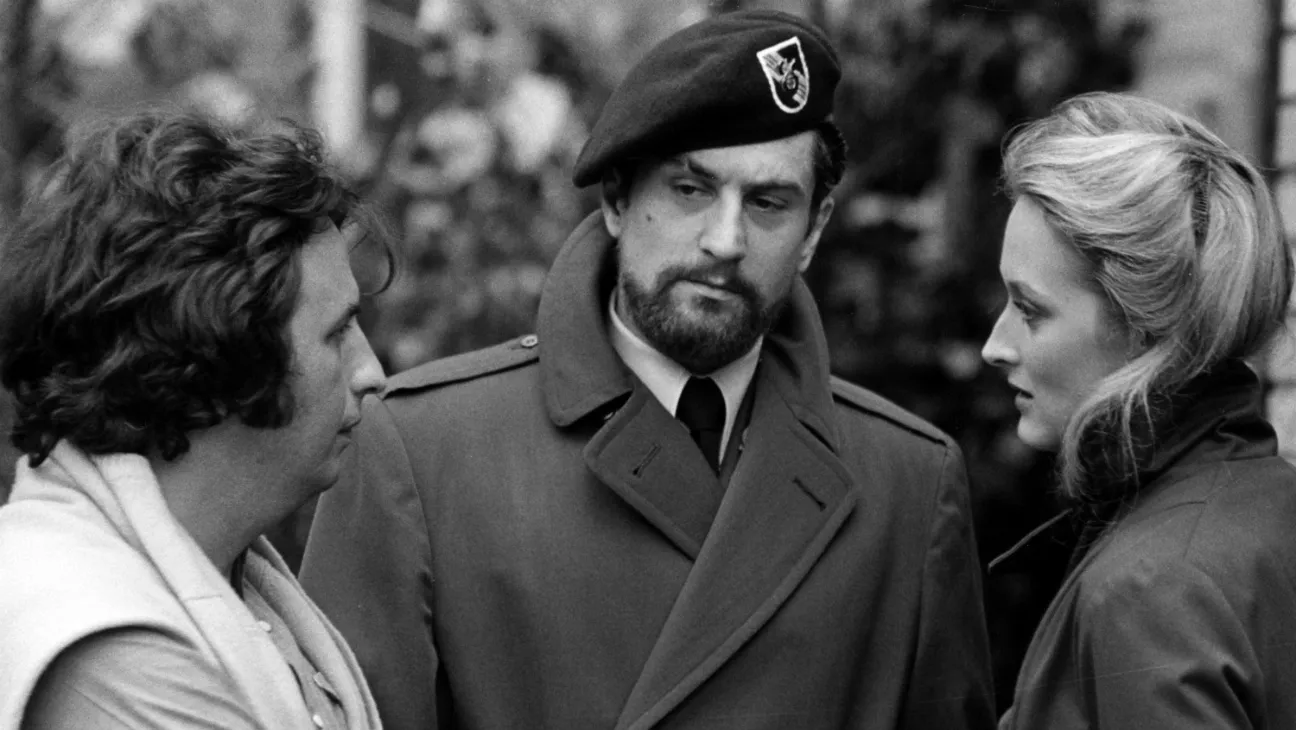
De Niro’s portrayal of Vronsky’s return to civilian life encapsulates the disorientation and isolation felt by many veterans. His performance is a meticulous study of a man internally fractured by his experiences, struggling to reconcile his wartime actions with his peacetime reality. The character’s development is a poignant exploration of the war’s lingering effects on an individual’s psyche and the challenges of reintegration into a world that no longer feels familiar.
Thematic Elements and Performance
Through Michael Vronsky’s eyes, “The Deer Hunter” explores the profound bonds of friendship that are both formed and tested by the crucible of war. De Niro’s performance emphasizes the intensity of these relationships, showcasing how shared experiences, both beautiful and horrific, can create unbreakable ties. The film also confronts the theme of loss—not just the loss of life but the loss of innocence and the enduring trauma that follows survivors home.
De Niro’s nuanced portrayal of Vronsky highlights the personal battle veterans face in coping with the memories of war and the difficulty of conveying those experiences to those who have never been on the battlefield. His character’s journey is a microcosm of the veteran experience, illustrating the internal and external battles that continue long after the guns have fallen silent.
Cultural Impact and Critical Reception
Upon its release, “The Deer Hunter” was both celebrated and controversial, receiving critical acclaim for its artistic achievement while also sparking debate over its portrayal of the Vietnam War and the Russian roulette scenes. Despite the controversy, the film’s impact on cinema and culture cannot be overstated. It won five Academy Awards, including Best Picture, cementing its place in film history and affirming the potency of its narrative and performances.

“The Deer Hunter” has been praised for its ability to humanize the war experience, providing a visceral understanding of the conflict’s impact on individuals and communities. De Niro’s portrayal of Michael Vronsky is often cited as one of his finest performances, lauded for its depth and authenticity. The film’s depiction of the war’s psychological toll contributed to a broader conversation about PTSD and the challenges faced by returning veterans.
Furthermore, “The Deer Hunter” has left an indelible mark on the portrayal of war in cinema, influencing numerous films that seek to explore the complexities of conflict and its aftermath. Its cultural significance is reflected in its enduring relevance, continuing to resonate with audiences and critics alike for its emotional depth and the strength of its performances.
6. Heat (1995)
“Heat,” directed by Michael Mann and released in 1995, is a masterful crime drama that delves into the intricate lives of its characters, particularly focusing on Neil McCauley, a consummate professional thief played by Robert De Niro, and his counterpart, Lt. Vincent Hanna (Al Pacino), a dedicated LAPD detective. The film’s exploration of the thin line separating the cop from the criminal, coupled with the exceptional performances of De Niro and Pacino, creates a narrative rich in complexity and moral ambiguity. “Heat” stands out not only for its action sequences but also for its profound examination of obsession, loss, and the sacrifices individuals make for their professions.
Plot and Character Development
In “Heat,” Robert De Niro’s Neil McCauley epitomizes the archetype of the professional criminal, living by a strict code that demands cutting ties with anyone or anything that you cannot walk out on in thirty seconds flat if you feel the heat around the corner. This principle guides McCauley’s life, dictating his relationships and actions throughout the film. De Niro’s portrayal of McCauley is nuanced, showcasing a man who, despite his criminal endeavors, possesses a deep sense of honor and professionalism.
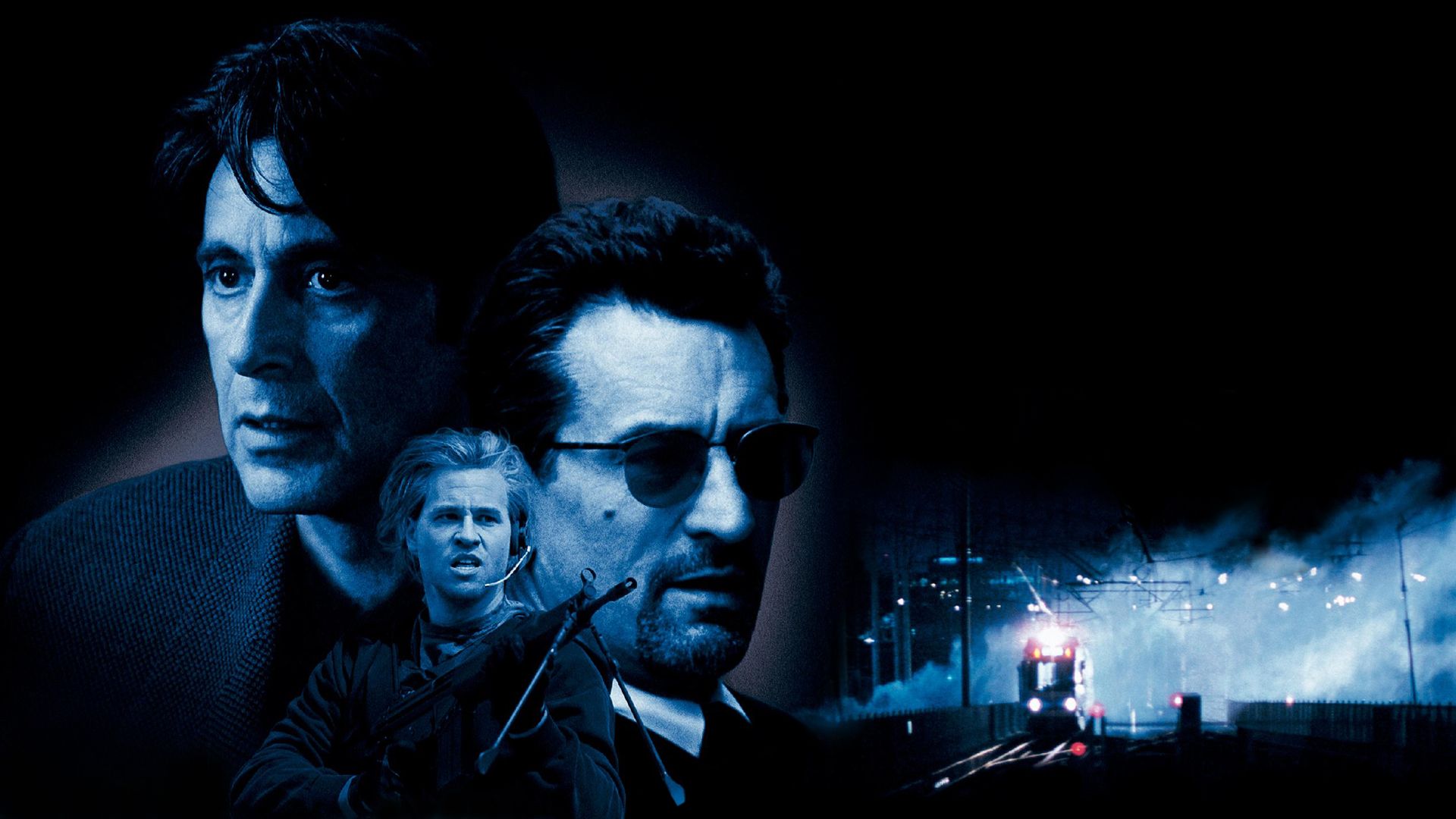
The dynamic between McCauley and Lt. Vincent Hanna is central to the film’s narrative, presenting a duality that blurs the conventional lines between hero and villain. Both characters are obsessively committed to their work, leading to personal sacrifices and a mutual respect that transcends their adversarial relationship. The interactions between De Niro and Pacino, particularly their face-to-face meeting in the diner, are charged with intensity and mutual recognition of their similarities, elevating the film’s exploration of their intertwined fates.
Thematic Elements and Performance
“Heat” examines themes of obsession, the duality of existence, and the inherent loneliness of lives led in the shadows of society. De Niro’s portrayal of McCauley as a solitary figure, disciplined and cautious, highlights the personal cost of living a life of crime. The character’s struggle with the desire for a normal life versus the reality of his profession adds depth to the narrative, exploring the sacrifices made in the pursuit of one’s goals.
The film also delves into the impact of obsession on personal relationships, with both McCauley and Hanna experiencing strained relationships due to their dedication to their respective professions. De Niro and Pacino’s performances bring to life the complexity of their characters’ internal conflicts, showcasing the human side of the criminal and the cop, making “Heat” much more than a conventional crime drama.
Cultural Impact and Critical Reception
Upon its release, “Heat” was acclaimed for its realistic portrayal of crime, meticulous attention to detail, and the electrifying performances of its cast. The film has since become a classic in the crime genre, influencing numerous films and television shows with its sophisticated narrative structure and character development.
The critical reception of “Heat” focused on the intense performances of Robert De Niro and Al Pacino, the film’s intricate plot, and Michael Mann’s direction, which combined action with deep psychological insight. The movie’s portrayal of the professional respect and personal disconnection between McCauley and Hanna has been particularly lauded, offering a nuanced perspective on the lives of individuals on opposite sides of the law.

“Heat” has left a lasting legacy in the crime genre, celebrated for its depth, realism, and the remarkable performances of its lead actors. The film’s exploration of the complexities of human nature, professional obsession, and the sacrifices made in the name of duty continues to resonate with audiences, securing its place as a seminal work in contemporary cinema.
7. Casino (1995)
“Casino,” directed by Martin Scorsese and released in 1995, stands as a pivotal film that explores the intricate web of greed, power, and betrayal in the heart of America’s gambling capital, Las Vegas. Robert De Niro’s portrayal of Sam “Ace” Rothstein, a gambling expert with a knack for administration, offers a deep dive into the psyche of a man entwined with the machinations of the casino industry and organized crime. The film, marking another successful collaboration between Scorsese, De Niro, and Joe Pesci, unfolds the rise and fall of Rothstein, providing a gritty, realistic look at the cost of ambition in the glittering, treacherous world of Las Vegas.
Plot and Character Development
Sam “Ace” Rothstein, portrayed by De Niro, is a character of exceptional intelligence and foresight, brought to Las Vegas by the mob to oversee the day-to-day operations of a major casino. His meticulous attention to detail and uncanny ability to manage the complexities of the casino business lead to unprecedented success. However, Rothstein’s ascent brings with it the inevitable pitfalls of power—greed, hubris, and vulnerability to the vices around him. De Niro’s performance captures Rothstein’s transformation from a confident, controlled operator to a man ensnared by the very world he sought to dominate.
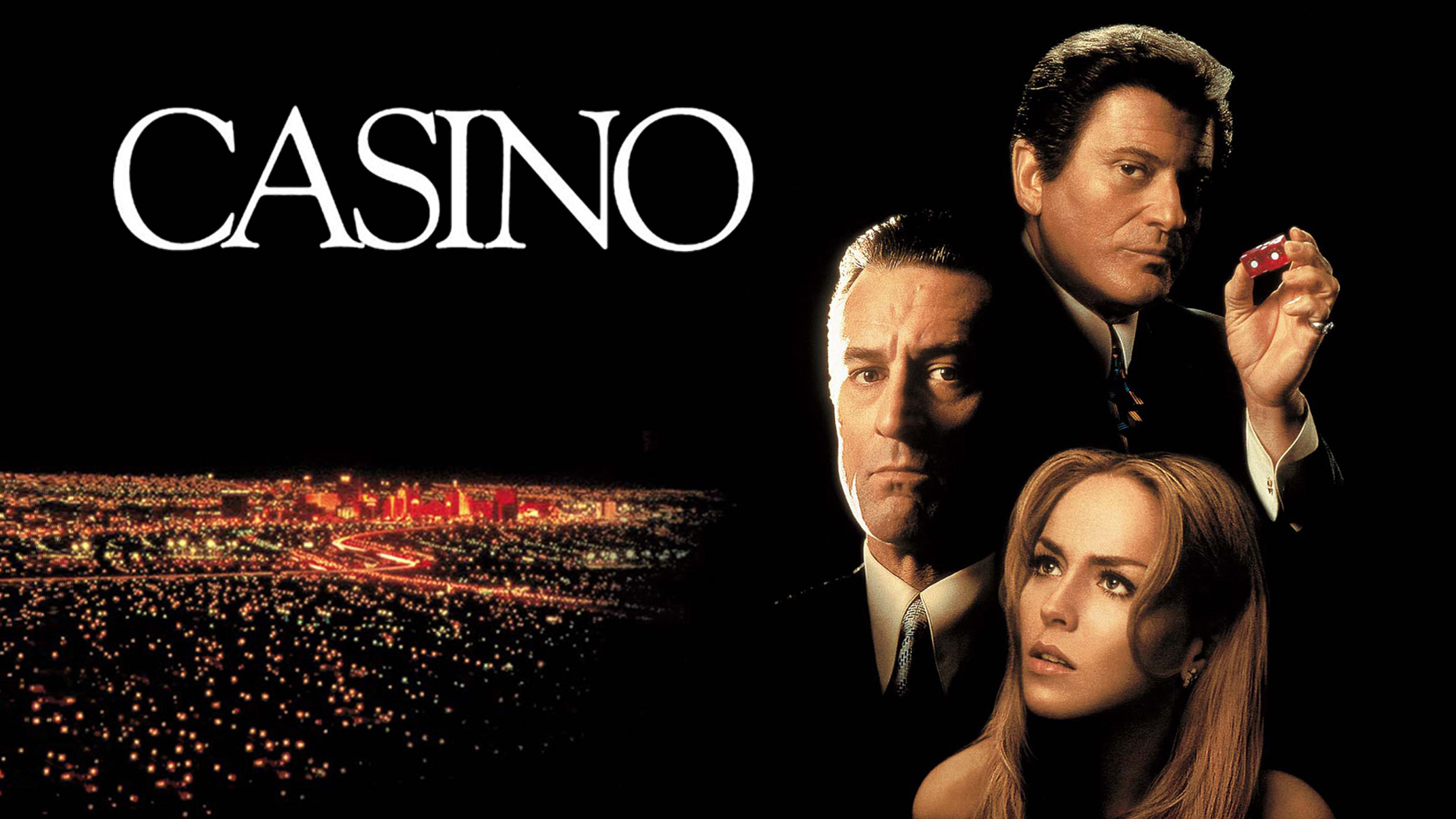
Rothstein’s relationships, particularly with his wife Ginger (played by Sharon Stone) and his childhood friend-turned-enforcer Nicky Santoro (played by Joe Pesci), further elucidate his character’s complexity and the self-destructive path he treads. De Niro’s portrayal is nuanced, reflecting Rothstein’s struggle to maintain control in a life increasingly characterized by chaos and betrayal.
Thematic Elements and Performance
“Casino” delves into the themes of corruption, deceit, and the illusion of control in the ostentatious yet perilous environment of Las Vegas. The film portrays the casino not just as a place of gambling but as a microcosm of society, where the American Dream is pursued through any means necessary, ethical or otherwise. De Niro’s Rothstein embodies the paradox of a man who is both a perpetrator and a victim of this world, his life a testament to the destructive power of greed and ambition.
De Niro’s performance is pivotal in exploring the complexity of Rothstein’s character—his professionalism and intelligence, juxtaposed with his emotional vulnerability and moral ambiguity. This layered portrayal offers a glimpse into the inner workings of a man who navigates the treacherous waters of organized crime, personal relationships, and the ever-present threat of downfall.
Cultural Impact and Critical Reception
Upon its release, “Casino” received mixed reviews, with some critics praising its ambitious storytelling and detailed depiction of Las Vegas’s underworld, while others criticized its length and explicit content. Over time, however, the film has gained recognition as a compelling narrative of Las Vegas’s dark side, with De Niro’s role heralded for its depth and authenticity.
The cultural impact of “Casino” is significant, providing insight into the complexities of the gambling industry and the corrupting influence of power and money. The film has contributed to the gangster genre, offering a nuanced perspective on the lives of those who operate within the shadows of legality and morality.

De Niro’s performance as Sam “Ace” Rothstein is a masterclass in character study, contributing to the film’s enduring legacy. Through his portrayal, “Casino” transcends the conventions of the genre, offering a profound commentary on human nature, the allure of power, and the fragility of the American Dream.
8. The King of Comedy (1982)
“The King of Comedy,” directed by Martin Scorsese and released in 1982, represents a significant departure from the typical fare of both Scorsese and his frequent collaborator, Robert De Niro. In this dark comedy, De Niro portrays Rupert Pupkin, a character whose comedic ambitions and obsession with fame lead him down a path of delusion and desperation. This film, through its exploration of celebrity, media culture, and the human desire for recognition, provides a satirical yet poignant commentary on the nature of fame and its impact on individuals and society.
Plot and Character Development
Rupert Pupkin is a character who embodies the dark side of the American Dream—the belief that anyone, regardless of their circumstances or talent, can achieve fame and success. De Niro’s portrayal of Pupkin is a balancing act between comedy and tragedy; he presents Pupkin as both a figure of ridicule and a character deserving of empathy. Pupkin’s relentless pursuit of fame leads him to concoct a plan to kidnap his idol, a late-night talk show host played by Jerry Lewis, in a bid to secure a spot on his show.
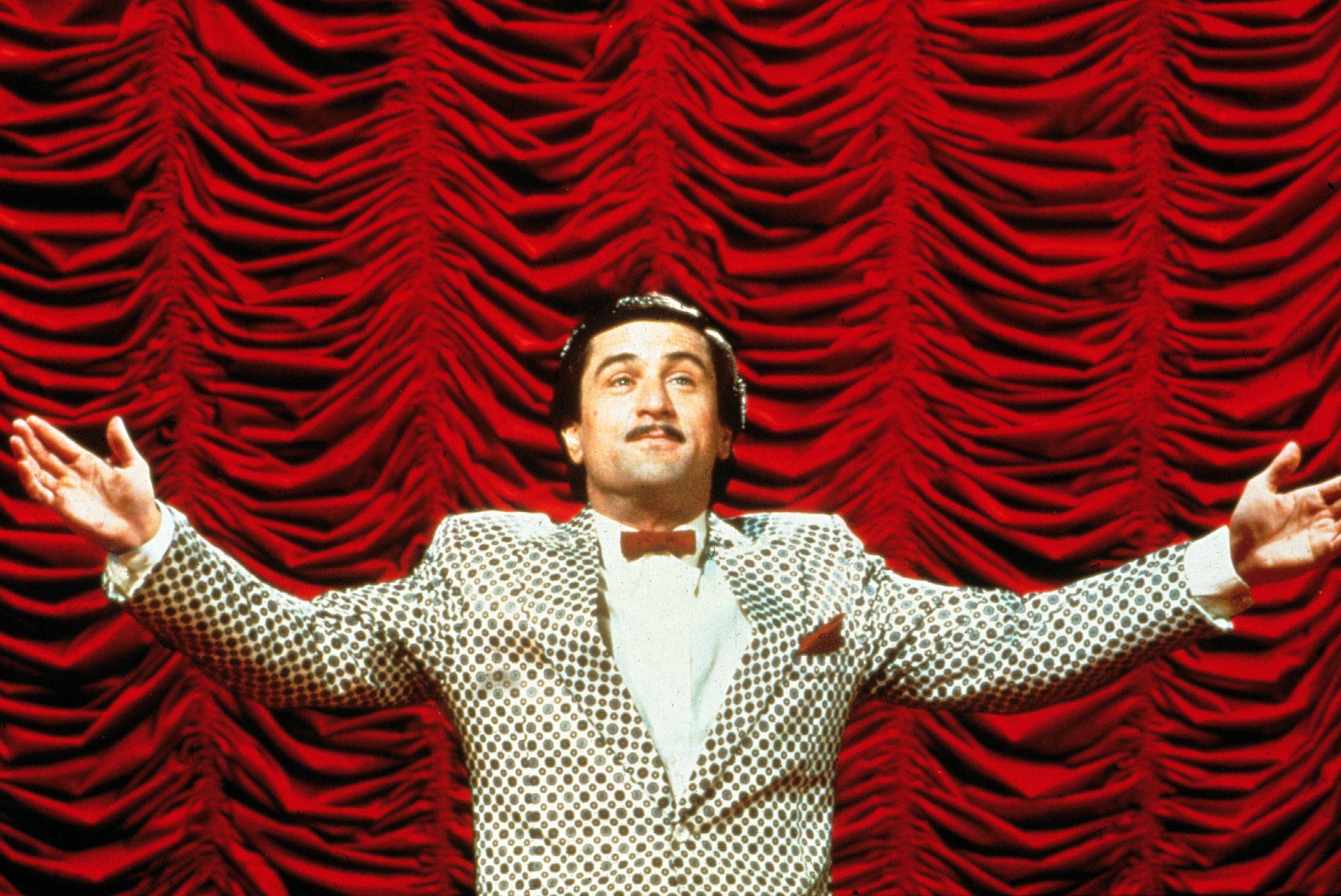
This journey into the depths of Pupkin’s obsession showcases De Niro’s versatility as an actor, adeptly navigating the fine line between Pupkin’s comedic delusions and his unsettlingly sincere belief in his destiny for stardom. The development of Pupkin’s character, from an ambitious but harmless fan to a man capable of criminal acts for the sake of recognition, serves as a critique of the celebrity-obsessed culture and the lengths to which people will go to achieve fame.
Thematic Elements and Performance
“The King of Comedy” delves into themes that are increasingly relevant in today’s media-saturated world. The film’s exploration of celebrity culture, the pursuit of fame at any cost, and the blurring lines between entertainment and reality predate the rise of reality TV and social media but resonate with current discussions about these phenomena. De Niro’s performance as Pupkin highlights the darkly comedic aspects of these themes, presenting a character whose naïveté and determination are both laughable and deeply troubling.
De Niro’s mastery of dark comedy is evident in his ability to elicit sympathy for Pumpkin, even as his actions become more extreme. His portrayal raises questions about the nature of fame, the value of authenticity, and the societal pressures that drive individuals to seek validation through celebrity.
Cultural Impact and Critical Reception
Upon its initial release, “The King of Comedy” was not a commercial success and received mixed reviews from critics. However, over time, it has been re-evaluated as a prescient and incisive critique of fame and fan culture. De Niro’s performance, in particular, has been praised for its depth and complexity, marking it as one of his most underrated roles.

The film’s cultural impact lies in its foresight regarding the evolution of celebrity culture and the media landscape. “The King of Comedy” anticipated the advent of reality television and the rise of social media, platforms where the lines between ordinary life and entertainment are increasingly blurred, and fame can be pursued by anyone with an internet connection.
9. A Bronx Tale (1993)
“A Bronx Tale,” released in 1993, marks Robert De Niro’s ambitious foray into directing, showcasing his adeptness not only behind the camera but also in front of it as Lorenzo Anello, a bus driver deeply committed to steering his son away from the seductive yet perilous allure of organized crime. Set against the backdrop of the 1960s Bronx, the film weaves a compelling narrative that delves into themes of fatherhood, morality, and the consequential nature of choices, underscored by De Niro’s powerful performance and directorial vision.
Plot and Character Development
At the heart of “A Bronx Tale” is the dynamic relationship between Lorenzo Anello and his son, Calogero, whose fascination with the local mob boss, Sonny, threatens to derail Lorenzo’s efforts to provide a moral compass. De Niro’s portrayal of Lorenzo encapsulates the quintessential struggle of parenthood: the desire to protect one’s child from external influences and guide them towards the right path. Lorenzo’s character is emblematic of integrity and hard work, qualities he endeavors to instill in Calogero amidst the temptations of quick money and respect garnered through association with the mob.
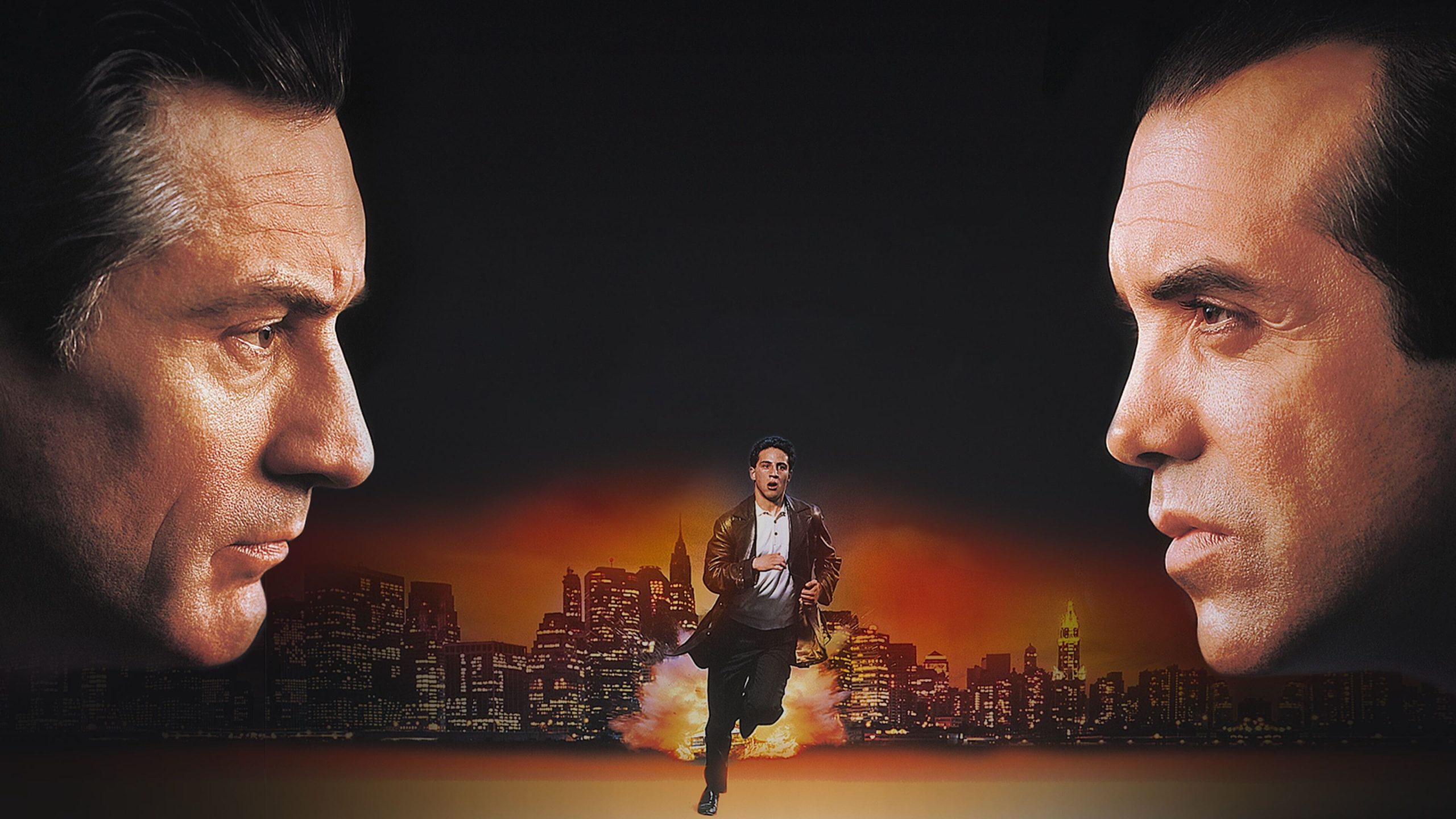
The film’s narrative arc is a poignant exploration of the father-son bond, punctuated by Lorenzo’s unwavering commitment to his values in the face of mounting challenges. De Niro’s nuanced performance brings to life the internal conflict of a father caught between his love for his son and the fear of losing him to the streets. This character development is central to the film’s exploration of choices and their lasting impact on our lives.
Thematic Elements and Performance
“A Bronx Tale” navigates a rich tapestry of themes, including the allure of power, the importance of family, and the essence of morality. Through the lens of Lorenzo Anello, De Niro presents a compelling narrative on the significance of paternal influence and the complexities of growing up in an environment where right and wrong are often blurred by circumstance. The film thoughtfully examines the concept of loyalty, juxtaposing familial bonds against the backdrop of organized crime’s deceptive glamour.
De Niro’s performance as Lorenzo is both heartfelt and profound, embodying the soul of a man torn between the harsh realities of his environment and the hope for a better future for his son. His directorial debut is marked by a keen sensitivity to the human condition, exploring the depths of fatherhood, the challenges of adolescence, and the indelible mark of the choices we make.
Cultural Impact and Critical Reception
Upon its release, “A Bronx Tale” was met with critical acclaim, lauded for its authentic depiction of the Bronx in the 1960s and the depth of its character portrayals. De Niro’s dual role as director and actor received particular praise, highlighting his ability to craft a narrative that is both engaging and emotionally resonant. The film has since become a beloved classic, appreciated for its honest exploration of themes that transcend time and place.

The cultural significance of “A Bronx Tale” lies in its nuanced portrayal of the complexities of father-son relationships and the moral dilemmas faced by individuals caught in the crossfire of conflicting values. Its legacy is cemented by its contribution to the discourse on family, identity, and the power of choice.
10. Silver Linings Playbook (2012)
“Silver Linings Playbook,” directed by David O. Russell and released in 2012, is a poignant romantic comedy-drama that delves into the complexities of mental illness, familial bonds, and the search for ‘silver linings’ amidst personal turmoil. Robert De Niro’s portrayal of Patrizio “Pat” Solitano Sr., the father to Bradley Cooper’s character who struggles with bipolar disorder, offers a multifaceted view of a family navigating the challenges of mental health issues together. De Niro’s role in the film is celebrated for its depth, sensitivity, and humor, contributing significantly to the narrative’s exploration of love, redemption, and resilience.
Plot and Character Development
At the core of “Silver Linings Playbook” is the story of Pat Solitano Jr., a man attempting to rebuild his life after a stint in a mental health facility. De Niro’s character, Pat Sr., is a devoted father imbued with his own set of obsessive-compulsive tendencies, particularly related to his superstitions surrounding his beloved Philadelphia Eagles. Pat Sr.’s interactions with his son are tinged with a mix of frustration, confusion, and unconditional love, painting a realistic picture of how families often grapple with mental illness.
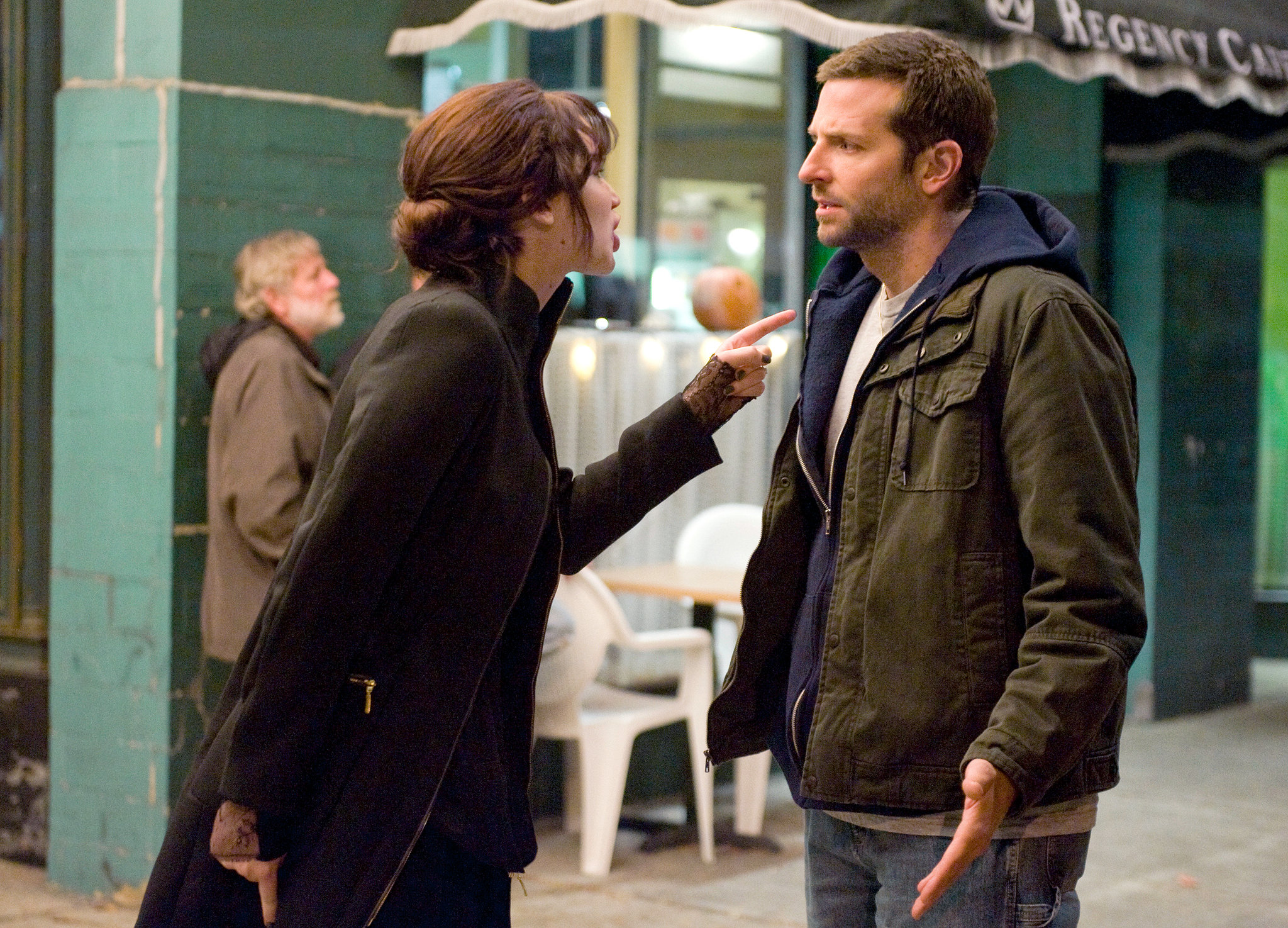
De Niro’s performance brings to life the complexities of a father striving to support his son’s recovery while dealing with his own issues. His portrayal of Pat Sr. is a delicate balance between comedic moments and profound emotional depth, highlighting the character’s development from a man fixated on control to one who learns the value of acceptance and understanding.
Thematic Elements and Performance
“Silver Linings Playbook” addresses themes of mental illness, the healing power of love, and the importance of family support in the face of adversity. De Niro’s nuanced performance as Pat Sr. sheds light on the often-overlooked perspective of family members who live with and care for individuals with mental health conditions. His character’s journey reflects the film’s overarching message that love and acceptance can pave the way to recovery and redemption.
De Niro’s ability to convey a range of emotions—from comedic frustration to heart-wrenching concern—adds a rich layer to the film’s portrayal of mental health. His character’s obsessive tendencies, such as the rituals surrounding Eagles games, serve as a metaphor for the human desire for control in an unpredictable world. Through Pat Sr., “Silver Linings Playbook” explores the dynamics of a family learning to navigate the challenges of mental illness together, emphasizing the transformative power of understanding and empathy.
Cultural Impact and Critical Reception
Upon its release, “Silver Linings Playbook” received widespread critical acclaim, particularly for its honest and compassionate portrayal of mental health issues. The film’s ability to balance humor with the serious subject matter of mental illness was noted as one of its strengths, offering a nuanced perspective on the topic that resonates with many viewers.

De Niro’s performance was a standout, earning him an Academy Award nomination for Best Supporting Actor. Critics and audiences alike praised his ability to move seamlessly between dramatic and comedic elements, demonstrating his versatility as an actor. His role in “Silver Linings Playbook” is often cited as one of his most memorable performances in recent years, contributing to the film’s impact and its discussions around mental health.
“Silver Linings Playbook” has since become a beloved film known for its compelling characters, heartfelt narrative, and thoughtful exploration of important themes. The film has contributed to broader conversations about mental health, highlighting the significance of compassion, family support, and the pursuit of personal ‘silver linings’ even in difficult times.
Robert De Niro’s Evolution as an Actor
Over the years, Robert De Niro has evolved from playing intense young men to portraying complex, mature characters, demonstrating remarkable range and depth. His ability to immerse himself in his roles, regardless of genre, has solidified his status as one of the greatest actors of his generation. De Niro’s commitment to his craft is evident in his diverse filmography, which showcases not only his talent as an actor but also his skill as a director and producer.
Robert De Niro’s Legacy
Robert De Niro’s legacy in Hollywood is unparalleled. Through his powerful performances and iconic roles, he has left an indelible mark on the film industry and popular culture. De Niro’s work continues to inspire both audiences and actors alike, cementing his place as a cinematic legend. His contribution to cinema is not just in the characters he has brought to life but also in his dedication to the art of filmmaking. As we reflect on his top ten movies, it’s clear that Robert De Niro’s influence on contemporary cinema is both profound and enduring.


